Zool 110 Lecture: Innovations in Reptiles and Amniotes (Lecture 33)
1/32
There's no tags or description
Looks like no tags are added yet.
Name | Mastery | Learn | Test | Matching | Spaced |
|---|
No study sessions yet.
33 Terms
amniotes
reptiles, birds, mammals
complete the transition to land
amniotes were the first group to what
amniote egg
has tough shell preventing water loss and encloses amniotic sac
1. amnion 2. chorion 3. allantois 4. yolk sac
what are the four extraembryonic membranes of an amniotic egg
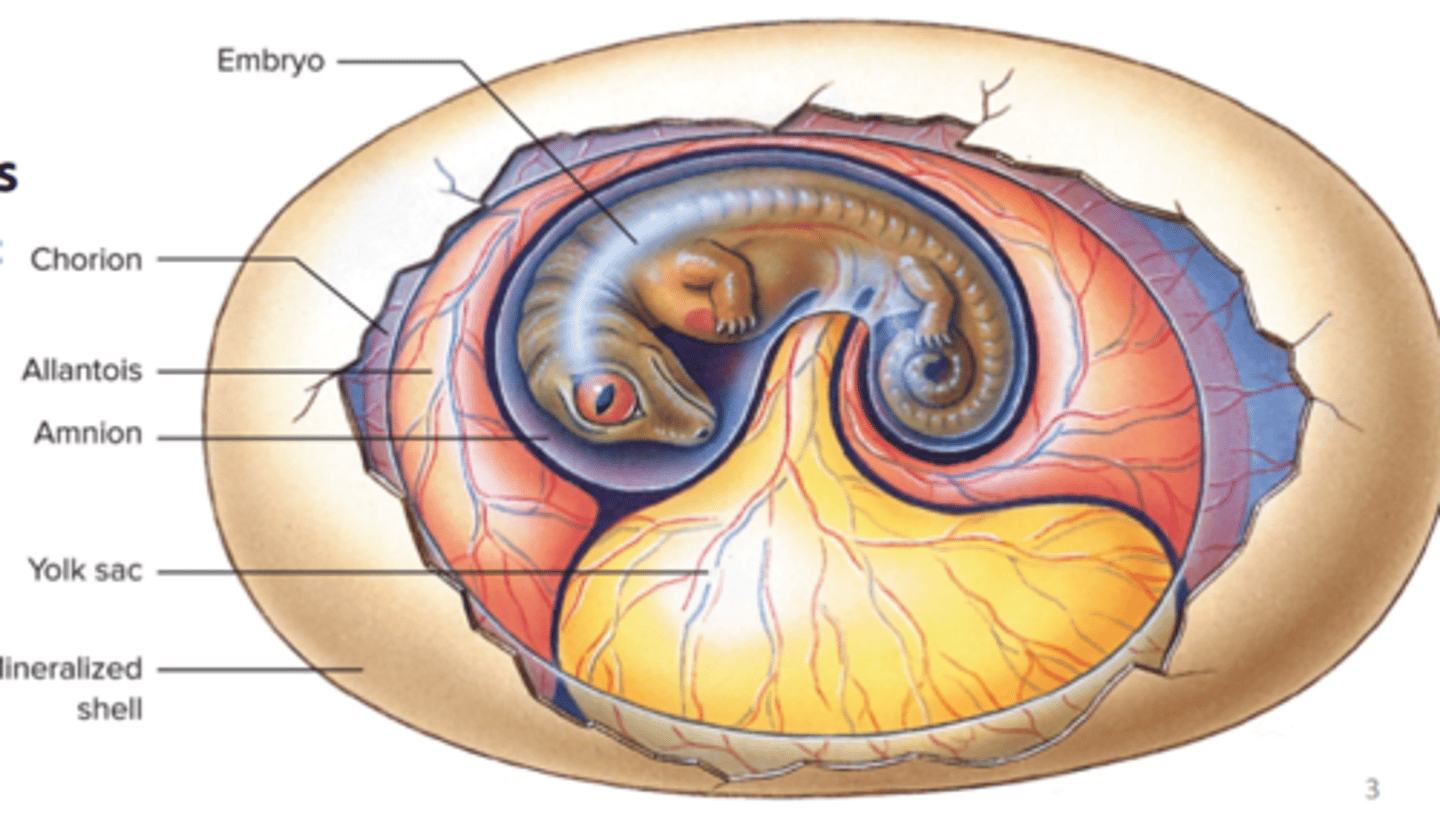
chorion and allontois
the _____ and the _____ work together for gas exchange in an amniotic egg
amnion
what layer of extraembryonic membranes is closest to the embryo
Non-Avian (reptile) epidermis
keratinized

negative pressure (aspiration)
do reptiles use negative or positive pressure for breathing
pulmonary and systemic
reptiles have a greater (but still incomplete) separation of _____ and _____ circuits

ectothermic
are reptiles endothermic or ectothermic
ectothermic
body temperature depends on environment
polyphyodont and homodont
reptiles can have _____ and ____ teeth
polyphyodont teeth
can shed teeth and grow new ones
homodont
teeth are all the same shape
vomeronasal organ
a portion of the mammalian olfactory system that is sensitive to pheromones

internal
do reptiles have internal or external fertilization
metanephric kidneys
kidneys of reptiles, birds, mammals, excrete uric acid
anthracosaurs
ancestors of amniotes
Synapsid
1 fenestra (opening behind orbit)

Diapsid
2 fenestrae (2 openings behind orbit)
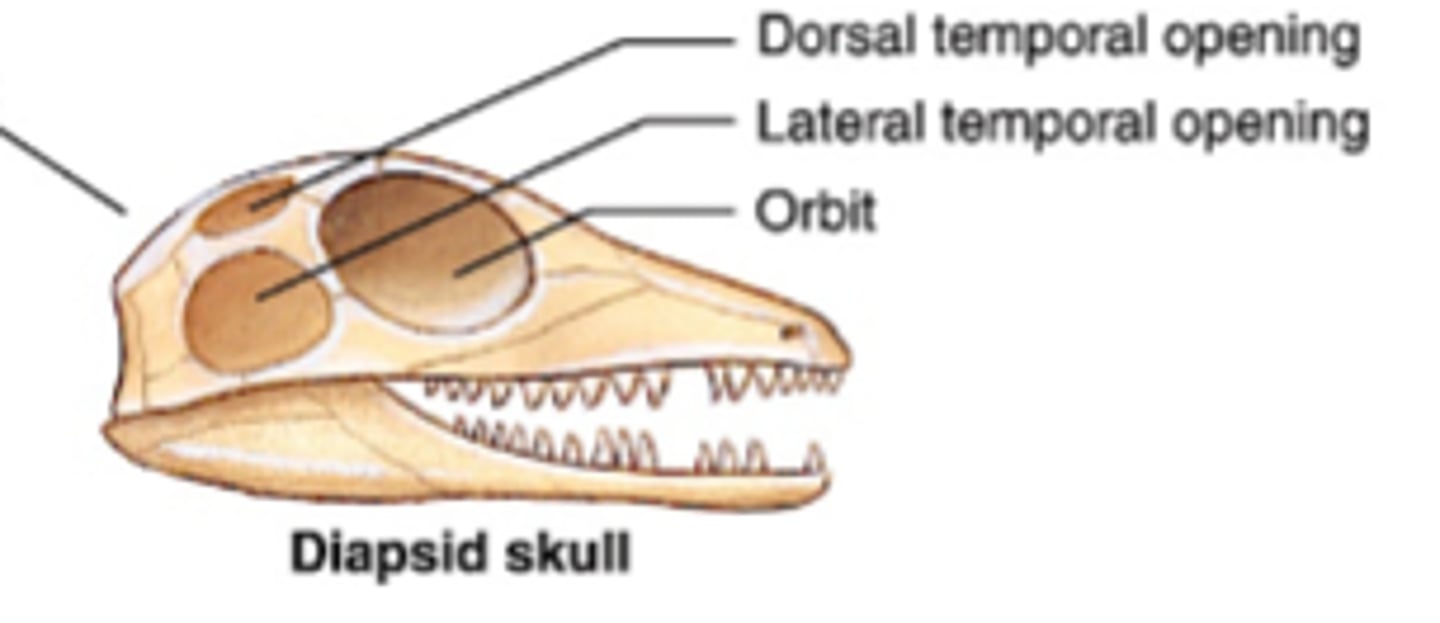
Anapsid
no fenestrae (no extra openings)
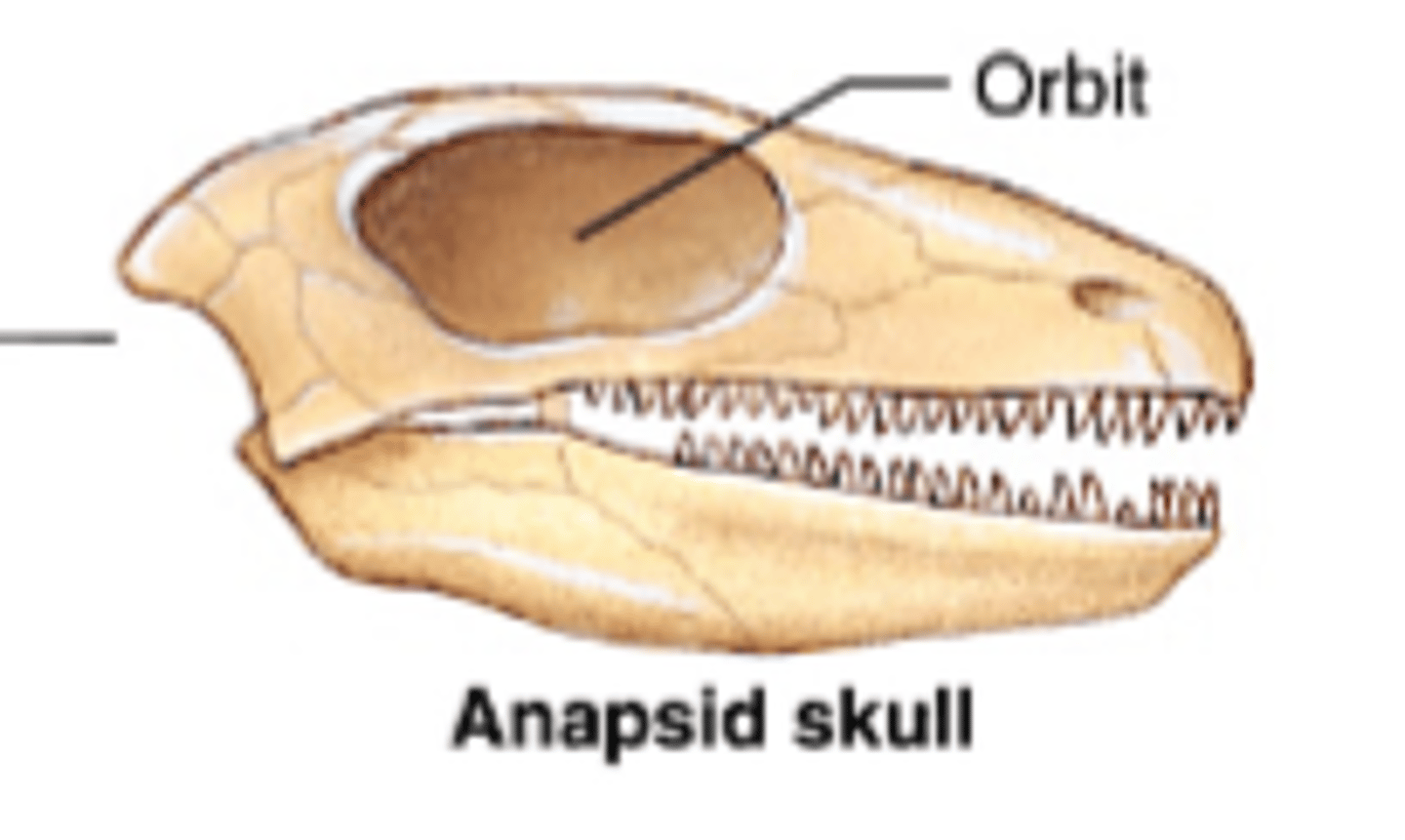
Order Testudines (Turtles)
bony shell consisting of dorsal carapace and ventral plastron
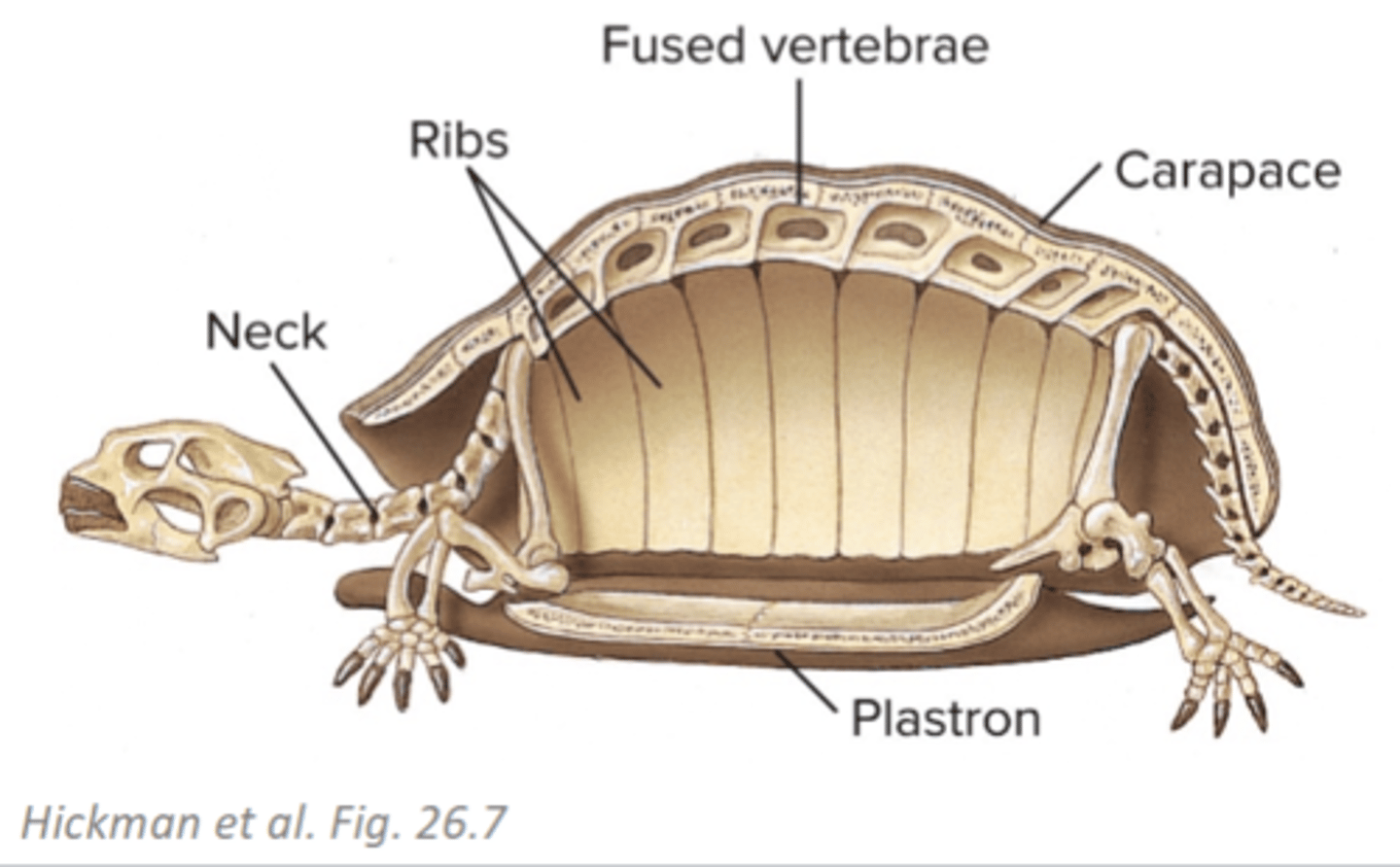
Order Squamata (Lizards and Snakes)
lower temporal bar lost, enables internally moveable (kinetic) skull, males with hemipenes
Suborder Sauria (Order Squamata)
lizards, found worldwide, oviparous, ovoviviparous, or viviparous
Suborder Serpentes (Order Squamata)
snakes, skulls highly modified to swallow large prey, many have venom, infrared sense in pit vipers, use tongue and vomeronasal organ, many use constriction to suffocate prey
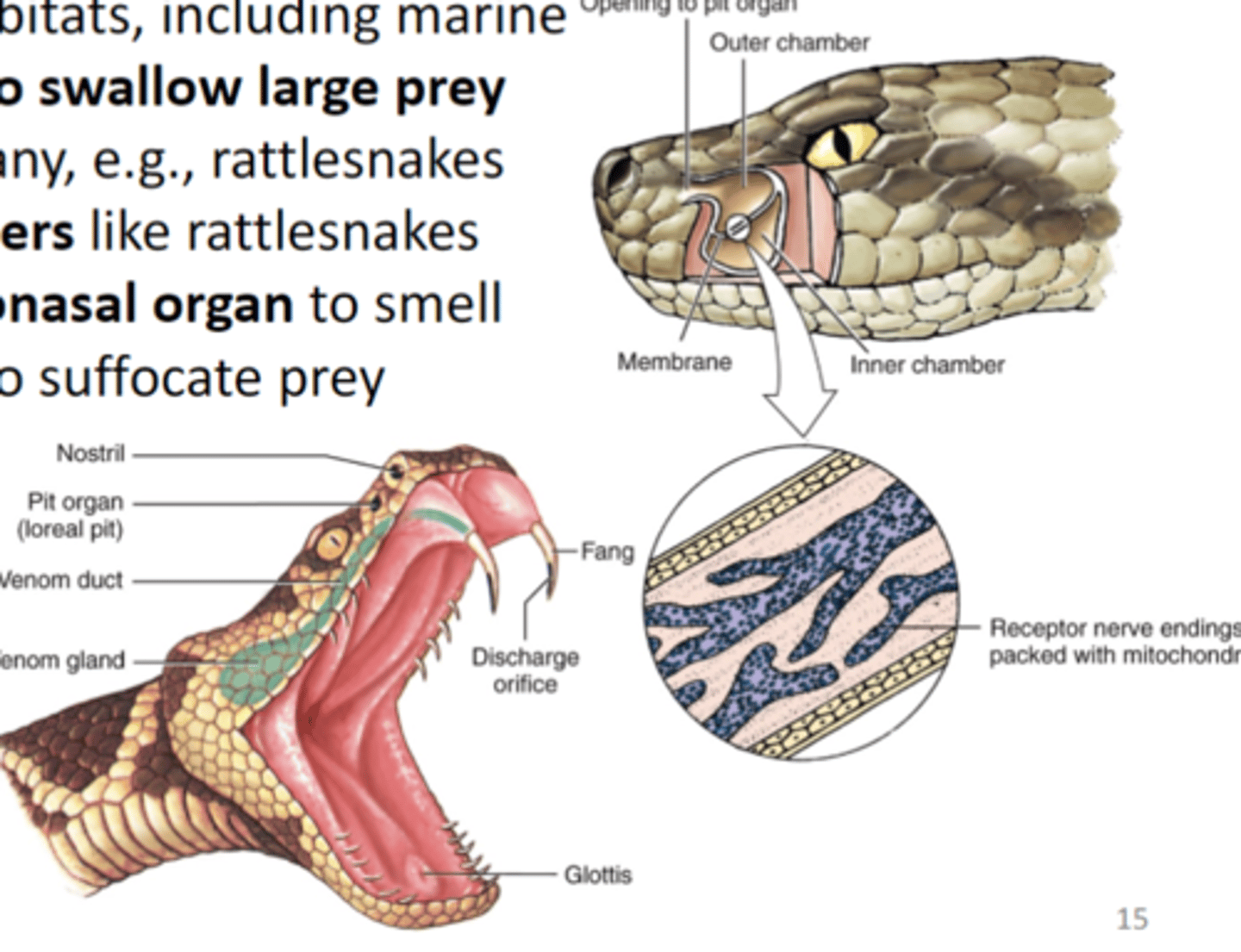
1. lateral undulation 2. concertina motion 3. rectilinear motion 4. sidewinder motion
what are the four main types of snake locomotion
Order Sphenodontra (Tuataras)
only two living species of lizard-like reptiles remaining from a extinct line of sphenodontids, have a well-developed parietal eye
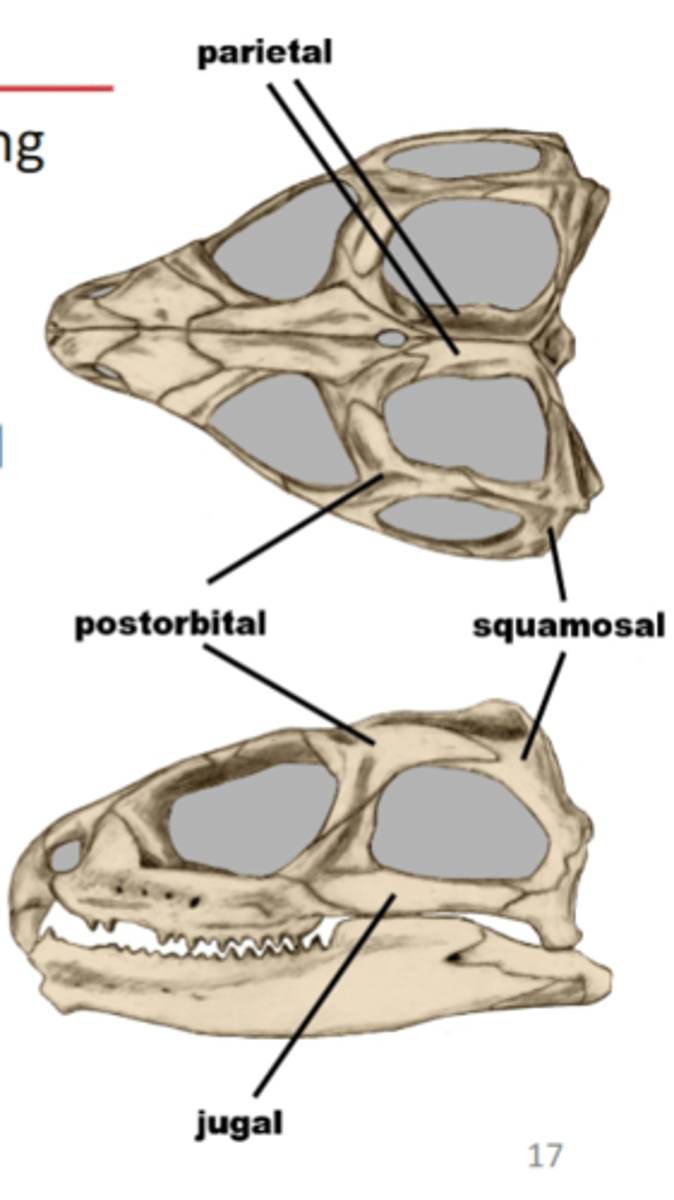
Order Crocodilia (Alligators and Crocodiles)
23 species worldwide, part of the great archosaur radiation, diapsid skull, thecodont dentition, amphibious in saltwater and freshwater
thecodont
teeth sit down into sockets
piscivorous crocodiles
fish eating
Gharial and Caiman
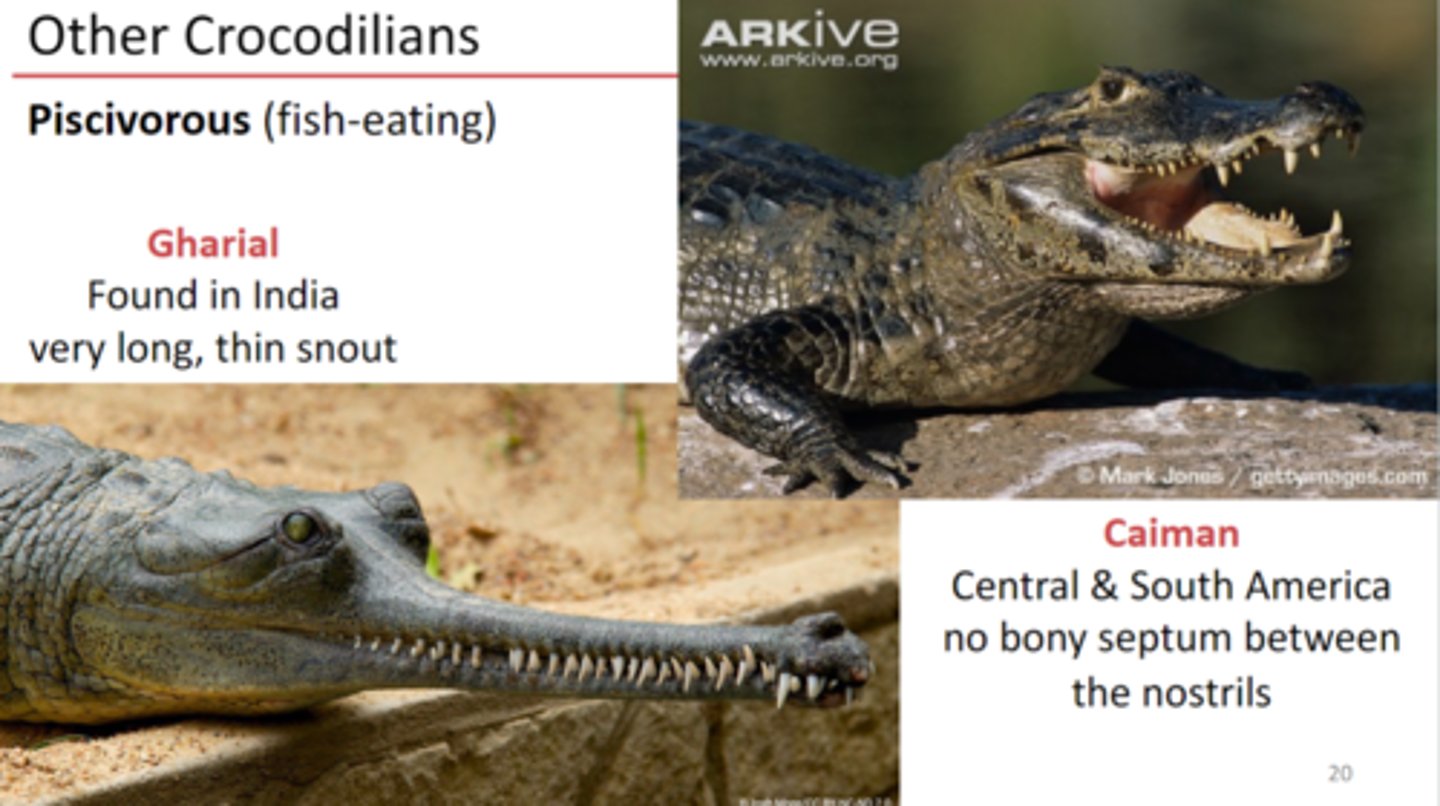
Pterosaurs
extinct flying reptiles, first vertebrate flight
Mosasaurs, Icthyosaurs, and Plesiosaurs
all belong to extinct orders within Class Reptilia, marine predators, were viviparous (did not lay eggs)